Not sure where to start?
Answer a few simple questions and we’ll direct you to your perfect bed.
Enable notifications to get the best news on sales and special offers
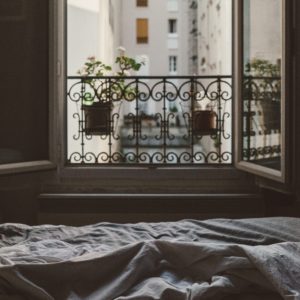
As you most likely know, we as humans inhale oxygen, and then exhale carbon dioxide. Often when we are stuck indoors for too long, we use up a large amount of the oxygen in our immediate surroundings. This causes an uncomfortable feeling.
Having a plant near your bed can boost the oxygen levels in your room and clear the air.
While plants do not breathe as we do, because of their lack of muscles, they do respire. During the process of photosynthesis, plants absorb carbon dioxide from the air around them. After some intricate chemical reactions, the plant in turn releases oxygen.
This turns a plant into a great breathing buddy for people and animals alike. The oxygen we need are produced by the plants, while the carbon dioxide that they need is exhaled by us.
You may have heard that most plants cease photosynthesis during the night. This means that they start to respire like we do, absorbing oxygen and releasing carbon dioxide. Some plants, such as succulents, orchids and epiphytic bromeliads do quite the opposite, however. You can consider getting one of these for optimal results.
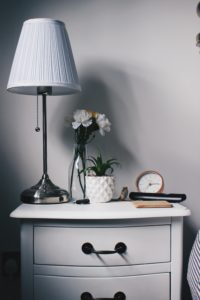
NASA has done some extensive research into the topic of air quality in enclosed spaces. During this research they found that plants play a pivotal role in improving indoor air, a concept that was unheard of up to that point. Both the plants’ leaves and their roots are utilized in removing trace amounts of toxic substances and fumes from tightly sealed buildings. Every 24 hours, plants can remove up to 87 percent of volatile organic compounds from their surroundings.
These volatile organic compounds include substances like carbon monoxide, formaldehyde (found in cigarette smoke, grocery bags and rugs for example) and benzene (found in things like paint, solvents, inks and man-made fibres). Especially in office settings, concentrations of benzene can become quite high. You might need to invest in a potted plant for your work station as well!
NASA recommends one potted plant per 100 square feet of indoor space for optimal results. If you have a large bed, you might even consider putting a plant on each side!
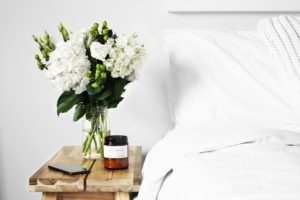
It is a popular custom to give flowers or a pretty potted plant to a family member or friend while they’re in the hospital. While most people mostly view it as a sweet and cheerful way to wish them quick recovery, there may be some health benefits to having a plant near you while you are recovering.
A recent study at Kansas State University in the USA recommended plants as a medicine that is non-invasive, inexpensive and effective for surgical patients. It revealed that patients who have plants in their rooms while recovering from surgery have significant improvements in psychological responses. This is evidenced by lower systolic blood pressure, and lower ratings of anxiety, fatigue and pain as compared to their counterparts without plants in their hospital rooms.
In the Netherlands, the Dutch Product Board for Horticulture found that adding plants to office spaces caused a significant decrease in complaints about fatigue, colds, headaches, coughs, sore throats and other flu-like symptoms.
It stands to reason that having a plant near the place where your sleep and stay when you are down with a cold or the flu, will have a huge positive effect on your health.
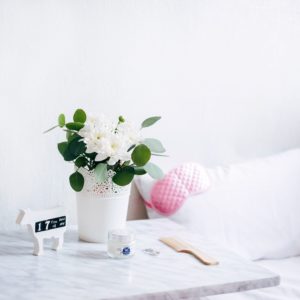
Many people suffering from insomnia know that noise pollution is a huge problem. Having plants in your bedroom can even help you with that.
Except for the fact that plants helps you breathe easier, as I mentioned above, they also have noise reducing qualities. It is a fact that is not very well-known. Many people living next to busy streets grow a hedge of trees, not only to protect themselves from prying eyes, but also to lower the noise pollution. The trees have this quality, because they have the ability to absorb, and then to diffract the noise that comes their way.
Plants in the bedroom can act much the same way. Some plants have been shown to be able to reduce the ambient noises by as much as five decibels. This will not eliminate ambient noises, of course, but it will certainly help set a much more relaxing and muted mood for you to fall asleep in.
A plant’s relaxing scent can also play a role in helping you sleep. Plants like lavender or jasmine are recommended for a relaxing scent.

The Aloe vera plant usually is mentioned first in a list of plants that are healthy and beneficial to you, and it is no great wonder. This miracle plant is a succulent plant species which have been used for herbal medicine since the early ages. It was dubbed ‘the immortal’ by ancient Egyptians, due to its hardiness. It needs just a few drops of water every now and then and lots of direct sunlight.
Its gel can help soothe inflammation and burned skin, and can even help scars to fade. When ingested it is also great to detoxify the body.
The Aloe is one of the plants that emits oxygen at night, and it can also help eradicate polluting chemicals. It is one of NASA’s top air-improving plants, and also has an interesting reaction to high levels of harmful toxins. When your home is highly polluted, the Aloe will develop brown spots on its leaves, thus alerting you to the problem.
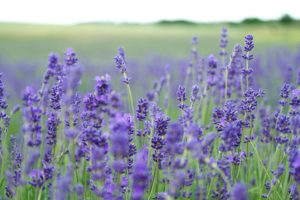
As mentioned above, lavender is known for its calming effect. The genus of 39 flowering plants in the mint family is well-known for its purple colour flowers and popular scent.
Research has shown that lavender can slow down your heart rate, help you feel calmer and lower your blood pressure. In a study performed at the University of Miami in 2008, it was found that babies who struggle and fuss when trying to fall asleep are lulled much more effectively with a scent of lavender in the room. Interestingly, in women it has been shown to increase light sleep and REM (rapid eye movement), with the opposite effect in men.
Lavender plants are relatively easy to grow, and their beautiful colour can brighten up your bedroom to boot!
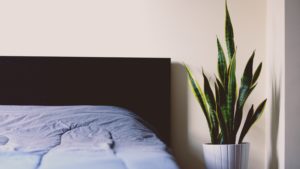
The snake plant, along with the Aloe vera mentioned above, is one of NASA’s top ten air filtering plants. It is a flowering plant of the family Asparagaceae and it originates from West Africa. It is an easy to care for plant, hardly needing any water or grooming, which makes it an excellent option if you are a busy person.
Besides the fact that the snake plant is a great air filter, it also emits oxygen at night, while simultaneously absorbing carbon dioxide. This translates into a great breathing partner.
The snake plant has also been proven to effectively treat headaches, eye irritation, and respiratory problems, as well as overall energy problems.
The snake plant’s beautiful two-toned leaves and upright shape will be a pretty accessory, especially as part of a minimalist design.
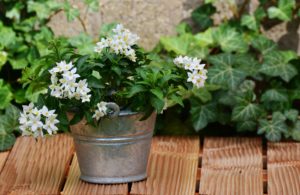
This sweet smelling blooming plant is actually a part of the olive family. It is ideally found outdoors, but can thrive as a potted plant as well.
The Wheeling Jesuit University has done research that show that the smell of jasmine is conductive to reduced anxiety levels, which leads to an enhanced quality of sleep. Not only that, but it also helps your brain to be more alert when you’re awake.
Jasmine comes in pink or ivory blossoms, and its swooping vines will make the perfect addition to your bedroom décor.

This midget palm is also known as the Reed Palm. It has many great attributes, such as being an excellent filter for airborne smells and toxins. Its pretty green leafage will cheer up your bedroom as well.
The palm originates from exotic tropical regions, and is relatively easy to care for. Just make sure that the soil stays moist, but not completely wet, and give it plenty of direct sunlight.
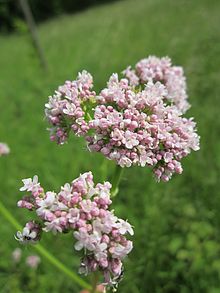
Valerian is an elegant little plant, which blooms in the summer with sweet white or pink flowers. The Roman physician Galen prescribed its roots for sleeping disorders, and recent research has shown that he was correct. A 2004 study done by Japanese scientists showed that simply inhaling the flowers’ perfume can heighten the brain’s GABA system, which is responsible for causing the body to relax and go to sleep.
The root is also listed as one of the 12 most efficient herbs to battle insomnia.
Your Valerian plant needs at least six hours of sunlight a day, so be sure to keep it in a sunny spot.

These pretty flowers bloom in almost all the colours of the rainbow. They are also one of the few plant species which keep on releasing oxygen during the night, and as such are an excellent addition to your bedroom.
These daisies also have a calming effect on people with apnea or allergies.
Gerbera daisies are relatively high maintenance, needing plenty of water, sunlight and loving care. Their cheerful colours, however, more than make up for this extra labour.
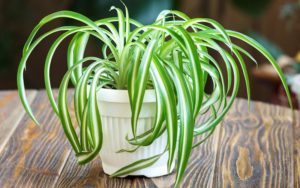
The spider plant might be the all-time champion of air cleansing. At least, NASA thinks so. In a study done by them, it was found that spider plants can remove up to 90 percent of the harmful formaldehyde from the air around them. Formaldehyde can be extremely harmful to human health. It can be found in many common household items like grout, adhesives and fillers.
For some pure air while you sleep, keep one or two of these pretty two-toned plants on your bedside table.
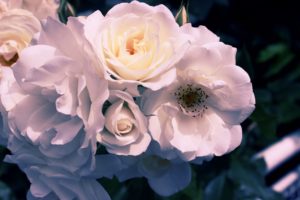
These dainty plants were very popular in the previous century for their beautiful white blossoms and rich scent. There is, however, more to them than what meets the eye.
A 2010 study by experts from the Heinrich Heine University in Dusseldorf came to the conclusion that inhaling the gardenia fragrance can be just as effective as Valium or Lexilium in relaxing the brain. It is a completely natural remedy for people who struggle with insomnia to get some much earned rest.
The only drawback is that these dainty plants need intense gardening to keep them in top shape. They don’t like direct sunlight, but need to stand in a light room. They also need plenty of water and sometimes vitamins. However, the peaceful sleep you are rewarded with by their scent might just make all the trouble worth it!
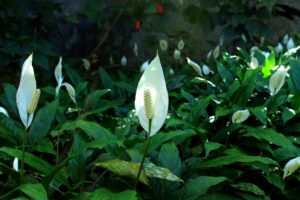
These beautifully shaped white blooms are another one of NASA’s top picks for air-purifying plants. It can filter harmful toxins trapped in the air, like formaldehyde and benzene. The peace lily also effectively humidifies the air, and can increase the humidity in a room with up to 5 percent. This is great news for people with allergies, as it traps the airborne microbes that triggers an allergy attack.
This plant needs a nice shady spot and weekly watering.
The stylish blooms will be an amazing addition to your bedroom décor.
Bed Shopping: A Family-Focused Approach to Smarter, Not Pricier Sleep
Sleeper Couch or Sofa Bed? A Guide to What Works for Your Space
Beds For Sale: What to Know Before You Buy
Best Beds: The 7 Best Bed Brands in South Africa
Comparing Queen Beds & Double Beds: Pros, Cons & Tips
5 Affordable Kids Beds That Don’t Compromise on Quality
How to Style a Three-Quarter Bed for Maximum Style & Comfort
Bedroom Furniture Guide for Newlyweds: From “I Do” to Move-In
Why Single Beds Are Making a Comeback: Secrets to a Functional Home
From Dorm Room to First Apartment: Why a Double Mattress Is Ideal
Bed Shopping: A Family-Focused Approach to Smarter, Not Pricier Sleep
Sleeper Couch or Sofa Bed? A Guide to What Works for Your Space
Beds For Sale: What to Know Before You Buy
Best Beds: The 7 Best Bed Brands in South Africa
Comparing Queen Beds & Double Beds: Pros, Cons & Tips
5 Affordable Kids Beds That Don’t Compromise on Quality
How to Style a Three-Quarter Bed for Maximum Style & Comfort
Bedroom Furniture Guide for Newlyweds: From “I Do” to Move-In
Why Single Beds Are Making a Comeback: Secrets to a Functional Home
From Dorm Room to First Apartment: Why a Double Mattress Is Ideal